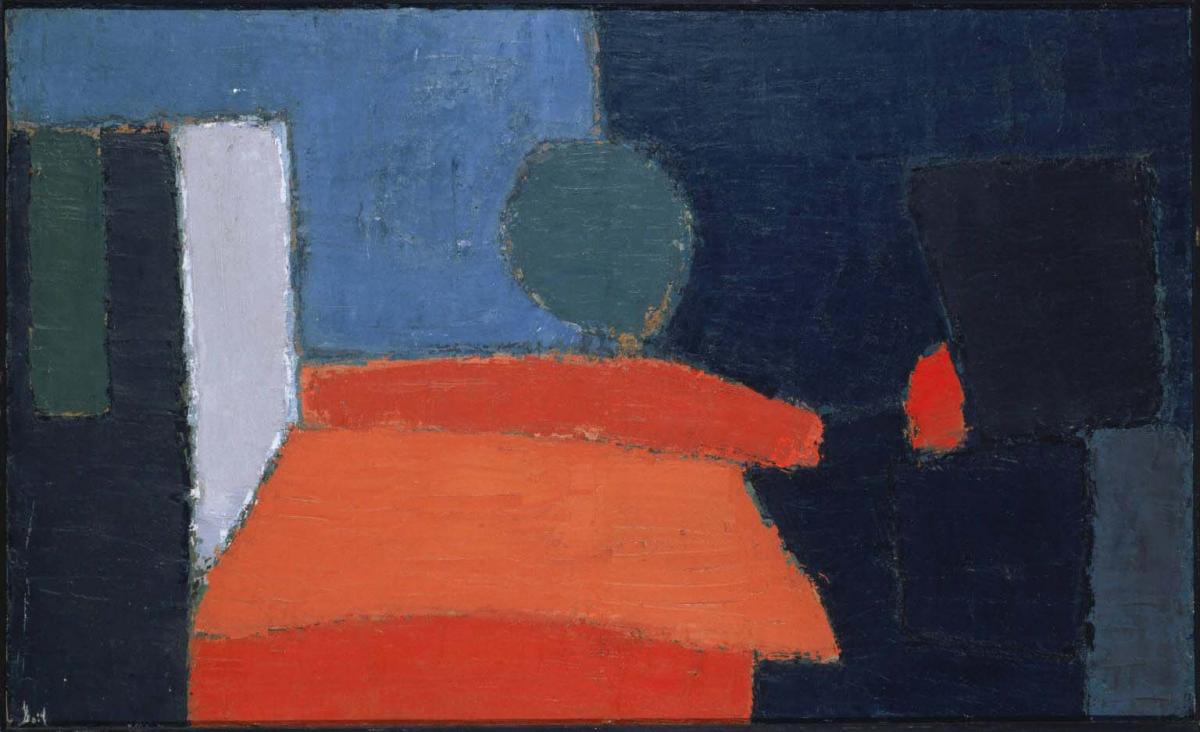Nocturne
Nicolas de Staël ( 1950 )

In 1950, de Staël, who fervently maintained that “[w]e are continually influenced and penetrated by nature,” was deeply affected by the soft light of London as well as the wide-open sky above the English countryside. This visual shock, coupled with his visit to the Netherlands the previous year, further provoked his desire for a closer relationship between nature and the rhythms of color and form, a dialogue that is embraced in two contrasting works in the collection, Nocturne and Le Parc de Sceaux. “By starting with his own experience, and through the very act of creating the painting,” wrote the critic Roger van Gindertaël, “de Staël strives to abolish the distinction between the natural phenomena which inspired its creation and the finished work itself.”
In Nocturne, de Staël’s forms, rendered in large planes of colors in subtle harmonies and contrasts, invoke a mood of quietude. As Eliza Rathbone has observed, de Staël often pursued “form as an evocation of mood or landscape.” Or as de Staël related to his friend, the poet Pierre Lecuire: “You never paint what you see or think you see; you paint with a thousand vibrations the blow that struck you….”
The composition, though highly abstracted, does resonate as a suggestion of the last vestiges of a sunset: a dark-green hovering sphere couples with a horizontal layering of bright oranges emerging from a deep blue-black, purple gloom. The gouache study for the Phillips work, also entitled Nocturne, reflects only variations in hues, the sun-like form depicted instead in golden yellow. The marks of de Staël’s palette knife, which he began to use almost exclusively in 1949, are evident here. Thick, broad scrapings made by the edge of the knife create heavy encrustations of impasto; they are especially apparent in the three tiers of orange that provide the focus of the picture.